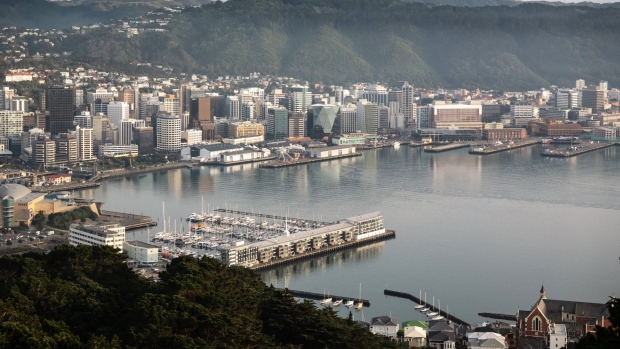Jun 28, 2022
New Zealand Government Backs Light Rail, New Tunnel for Capital
, Bloomberg News

(Bloomberg) -- New Zealand’s government has backed a plan to transform transport in capital city Wellington with light rail and a new tunnel.
The plan, estimated to cost NZ$7.4 billion ($4.6 billion), would see light-rail routes built from downtown Wellington to the south coast and to the airport in the east, encouraging housing development in the suburbs serviced. A new four-lane tunnel would be built through Mount Victoria, which divides the central city from its eastern peninsula, with the existing two-lane one converted for use by walkers and cyclists.
“This is a once-in-a-generation opportunity to shape Wellington’s future, align transport and urban development, and help to address the climate crisis by moving more people with fewer vehicles,” said Finance Minister Grant Robertson. “The southern light rail option is our preferred choice for Wellington because of the significant potential it offers for new housing and neighborhood growth.”
Wellington, a compact harbor city of more than 200,000 people, has long suffered from congestion on its overloaded narrow roads, but policy makers and residents have been unable to reach consensus on the best solution. Transport issues could worsen as the population swells.
By 2050, the government expects up to 80,000 more people to be living within the city limits, and 25% more people coming into the central city each workday from across the region.
“Light rail will support more people living centrally, close to where they work, study and live their lives,” Robertson said.
Government ally the Green Party said the proposed new tunnel was “not the best for the climate” because it will be high-carbon and high-cost.
The opposition National Party said the tunnel won’t solve congestion issues because two of its four lanes would be for public transport, leaving two for general traffic which is no different to the current situation.
Wellington’s city and regional councils must now agree to the plan, after which work will commence on a detailed business case. Construction is estimated to take 10 to 15 years, indicating completion in the 2030s, but a start date hasn’t been set yet.
©2022 Bloomberg L.P.






